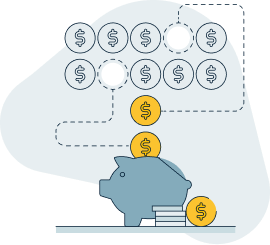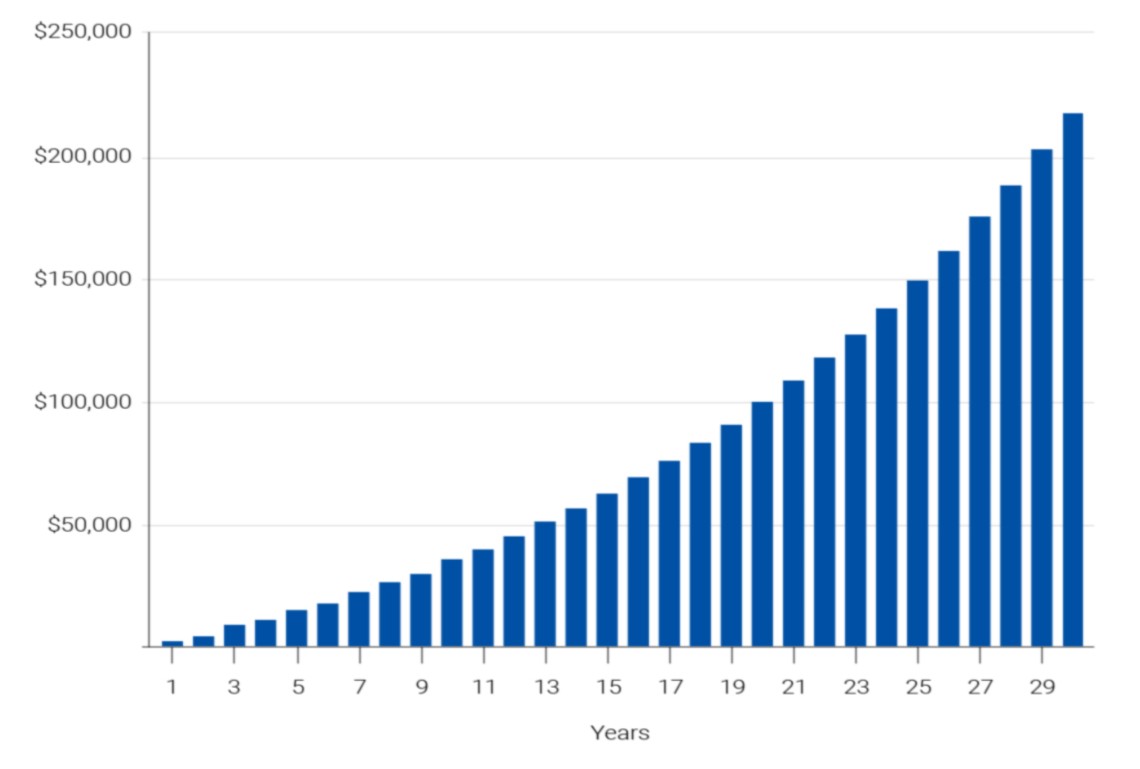*
These results are general estimates only and
(i) are based on the accuracy and completeness of the data you have entered,
(ii) are based on assumptions that are believed to be reasonable, and
(iii) are for informational purposes only and should not be relied on for
advice.
Actual results may vary, perhaps to a large degree.
You should consult your professional advisor before taking any action.This
calculator tool does not represent or replace a comprehensive financial plan or
represent any type of financial planning service. The scope of this analysis is
limited to one aspect of your financial goals.
Royal Bank of Canada does not make any express or implied warranties or
representations with respect to any information or results in connection with
this calculator.
Royal Bank of Canada will not be liable for any losses or damages arising from
any errors or omissions in any information or results, or any action or decision
made by you in reliance on any information or results in connection with this
calculator tool.
1)
RBC
2020 Financial Independence in Retirement Poll. Findings from the 30th
annual RBC RRSP Poll, conducted by Ipsos from December 10 to 17, 2019 on behalf
of RBC Financial Planning, through a national survey of 2,000 Canadians aged 18+
who completed their surveys online. Quota sampling and weighting are employed to
balance demographics to ensure that the sample's composition reflects that of
the adult population according to Census data and to provide results intended to
approximate the sample universe. The precision of Ipsos online polls is measured
using a credibility interval. In this case, the poll is accurate to within
±2.2 percentage points had all Canadian adults been polled. All sample
surveys and polls may be subject to other sources of error, including, but not
limited to coverage error, and measurement error.
2)
Under the Lifelong Learning Plan, you can withdraw up to $10,000 per calendar
year for your own or your spouse's full–time training or post–secondary
education.
The total amount that can be withdrawn is $20,000 each with withdrawals over a
maximum of four consecutive years.
At least 10% of the amount borrowed must be repaid each year, over a maximum
period of 10 years.
3)
You can withdraw up to $60,000 from your RRSP to buy your first home under the Home Buyer’ Plan. To be eligible, you must be a Canadian resident and considered a first-time homebuyer. The funds must have been on deposit at least 90 days before you withdrew them, and a signed written agreement to buy or build a qualifying home is required. Funds withdrawn under the HBP must be repaid to their RRSP over a 15-year period. At least 1/15 of your withdrawal must be repaid to the RRSP each year. The repayment period begins as of the second year after the first withdrawal was made under the Home Buyers Plan (HBP).
For withdrawals between January 1, 2022 and December 31, 2025, the repayment period begins as of the fifth year after the withdrawal was made. For details see Canada Revenue Agency Home Buyers’ Plan
4)
Assets in an RRSP must be Qualified Investments under the Income Tax Act. If the
TFSA holds non-Qualified Investments, it could be subject to tax.
5)
Real-time streaming quotes are available on stocks and ETFs for all clients.
Real-time streaming quotes are also available on options and over-the-counter
(OTC) securities for Royal Circle and Active Trader clients, upon accepting the
terms and conditions of all exchange agreements on the RBC Direct Investing
online site.
6)
RBC InvestEase is a restricted portfolio manager providing access to model
portfolios consisting of RBC iShares ETFs with each model portfolio holding up
to 100% of RBC iShares ETFs. RBC iShares ETFs are comprised of RBC ETFs managed
by RBC Global Asset Management Inc. (RBC GAM) and iShares ETFs managed by
BlackRock Canada Limited (BlackRock Canada). RBC GAM and BlackRock Canada have
entered into a strategic alliance to bring together their respective ETF
products under the RBC iShares brand, and to offer a unified distribution
support and service model for RBC iShares ETFs.
Other products and services may be offered by one or more separate corporate
entities that are affiliated to RBC InvestEase Inc., including without
limitation: Royal Bank of Canada, RBC Direct Investing Inc., RBC Dominion
Securities Inc., RBC Global Asset Management Inc., Royal Trust Corporation of
Canada and The Royal Trust Company. RBC InvestEase Inc. is a wholly-owned
subsidiary of Royal Bank of Canada and uses the business name RBC InvestEase.
The services provided by RBC InvestEase are only available in Canada.
7)
RBC Direct Investing Inc. and Royal Bank of Canada are separate corporate
entities which are affiliated. RBC Direct Investing Inc. is a wholly owned
subsidiary of Royal Bank of Canada and is a Member of the Canadian Investment Regulatory Organization and the Canadian Investor Protection Fund.
Royal Bank of Canada and certain of its issuers are related to RBC Direct
Investing Inc. RBC Direct Investing Inc. does not provide investment advice or
recommendations regarding the purchase or sale of any securities. Investors are
responsible for their own investment decisions. RBC Direct Investing is a
business name used by RBC Direct Investing Inc.
Royal Bank of Canada and Royal Mutual Funds Inc. (RMFI) make no warranties,
express or implied, as to the accuracy or completeness of the information
contained herein.
Royal Bank of Canada and RMFI shall not be liable for any losses or damages
arising from any errors or omissions in information contained in this
calculator.
Financial planning and investment advice are provided by RMFI. RMFI, RBC Global
Asset Management Inc., Royal Bank of Canada, Royal Trust Corporation of Canada
and The Royal Trust Company are separate corporate entities which are
affiliated. RMFI is licensed as a financial services firm in the province of
Quebec.
Information about the Registered Retirement Savings Plan is based on what is
currently available from the Canadian government and can be subject to change.



